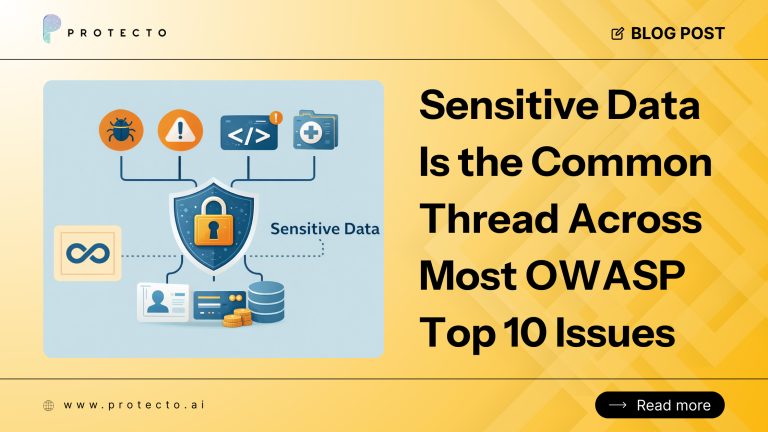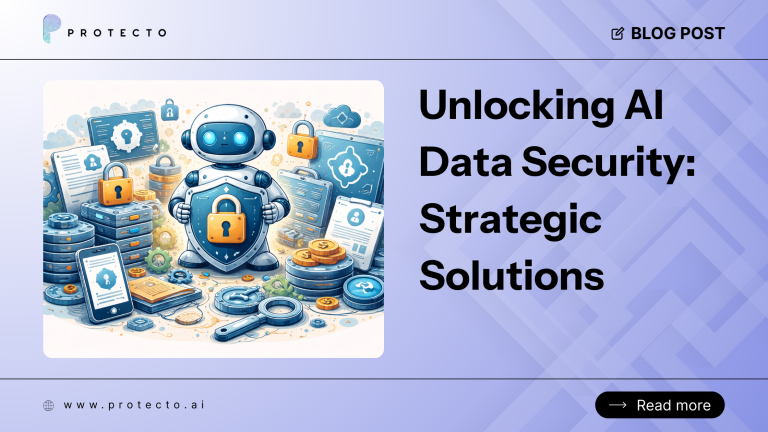In today’s digital landscape, where cyber threats are ever-evolving and data breaches can have devastating consequences, zero-trust security has emerged as a robust approach to protect organizations and their critical systems. At its core, zero-trust challenges the traditional notion of inherent trust within network boundaries, advocating for a holistic security posture that treats every entity as a potential threat until proven trustworthy.
Complex AI systems present unique security challenges that traditional perimeter-based defenses may struggle to address effectively. By embracing zero-trust architectures, organizations can fortify their AI systems against evolving threats, ensuring the integrity and reliability of these powerful technological tools.
Zero-Trust Fundamentals
At its core, a zero-trust architecture operates on the principle of “never trust, always verify,” challenging the traditional castle-and-moat approach, in which everything inside the network perimeter is considered trusted. Zero-trust acknowledges that even trusted entities, such as employees or authorized devices, can potentially be compromised or exploited by malicious actors.
The zero-trust architecture replaces the notion of a hardened network perimeter with a more granular approach, where every attempt to access resources or perform actions is scrutinized and verified. This verification process involves robust authentication mechanisms, least-privilege access controls, and continuous monitoring and validation of user, device, and application behavior.
Zero-trust enforces dynamic trust calculations based on real-time risk assessments instead of relying on static, predefined trust levels based on network location or user roles. These assessments consider contextual factors such as user identity, device posture, network characteristics, and behavioral patterns, ensuring trust is continuously evaluated and adapted as conditions change.
This proactive security method enables organizations to respond swiftly to emerging threats and maintain a resilient security posture in an ever-evolving threat landscape.
Trust Boundaries in AI Systems
AI systems often encompass a complex ecosystem of interconnected components, including data sources, APIs, model architectures, and deployment environments. Identifying and securing these trust boundaries is crucial to mitigating threats and ensuring the integrity and reliability of AI systems.
One of the primary trust boundaries lies in the data ingestion and preprocessing stages. AI models heavily depend on the quality and integrity of the data they are trained on. Compromised or poisoned data can lead to biased or adversarial model behavior, undermining the system’s trustworthiness. Establishing robust data validation and provenance mechanisms is essential to maintain trust in the foundation of AI systems.
Another critical trust boundary exists within the AI model itself. Modern AI architectures often involve intricate combinations of various model components, such as pre-trained models, transfer learning techniques, and ensemble models. Each component introduces potential vulnerabilities and attack vectors, necessitating rigorous validation and verification processes.
Furthermore, the deployment environments for AI models, including inference servers, APIs, and containerized systems, represent significant trust boundaries. These interfaces serve as entry points for adversarial inputs or unauthorized access attempts, underscoring the importance of implementing robust authentication, authorization, and monitoring mechanisms.
Defining and securing trust boundaries in AI systems is quite demanding due to their dynamic and evolving nature. AI models are often retrained or updated with new data, and deployment environments are subject to frequent changes and scaling operations. This fluidity requires continuous monitoring and adaptation of trust boundaries to maintain a robust security posture.
Continuous Verification: The Heart of Zero Trust
In AI architectures, continuous verification involves a multifaceted approach that combines various techniques and mechanisms. One crucial aspect is the real-time monitoring and analysis of user, device, and application behavior. By using machine learning algorithms and abnormality detection models, organizations can establish baselines for normal behavior and promptly identify deviations that may indicate potential threats or compromised entities.
Another essential component of continuous verification is the implementation of granular access controls. This process enforces the precept of least privilege, ensuring that users, applications, and processes are given only the lowest necessary permissions to perform their intended functions. Dynamic risk assessments and contextual factors, such as user roles, device posture, and network conditions, can be used to adaptively adjust access levels, further enhancing security.
Furthermore, continuous verification extends to verifying data integrity and provenance throughout the AI pipeline. From data ingestion and preprocessing to model training and deployment, robust validation mechanisms must be in place to ensure the trustworthiness and reliability of the data and models involved.
Machine learning plays a vital role in facilitating adaptive and intelligent verification mechanisms. By leveraging advanced techniques like federated learning, transfer learning, and reinforcement learning, organizations can continuously refine and optimize their verification models, staying ahead of evolving threats and maintaining a proactive security stance.
Securing Data Pipelines
In AI systems, the integrity and trustworthiness of the underlying data directly impact the reliability and performance of the resultant models. Embracing zero-trust principles at each stage of the data pipeline is crucial to mitigating risks and ensuring the overall security of AI architectures.
The data ingestion stage represents a critical trust boundary, where external data sources are introduced into the AI ecosystem. Implementing stringent data validation mechanisms, such as format checks, schema validation, and provenance tracking, is essential to identify and prevent the introduction of malicious or corrupted data. Access controls and encryption measures should also be employed to secure the ingestion channels and protect data integrity during transit.
As data undergoes preprocessing and transformation, additional security measures must be in place to maintain trust boundaries. This includes validating the integrity of the preprocessing codebase, ensuring secure execution environments, and implementing robust logging and auditing mechanisms to track and verify data transformations.
During the model training phase, zero-trust principles dictate the need for secure, isolated training environments protected from unauthorized access and potential data leakage. Techniques like secure multi-party computation and federated learning can be leveraged to enable collaborative model training while preserving data privacy and confidentiality.
Furthermore, practical examples of securing data flows within AI pipelines include:
- Implementing robust encryption protocols.
- Employing secure critical management systems.
- Enforcing strict access controls based on the principle of least privilege.
Continuous monitoring and anomaly detection mechanisms should be deployed to promptly identify and respond to deviations or suspicious activities within the data pipelines.
Zero Trust and Model Deployment
As AI models transition from training to deployment, securing the deployment endpoints becomes critical to maintaining a robust zero-trust security posture. These endpoints, which include APIs, inference servers, and other model-serving interfaces, represent potential entry points for adversarial attacks and unauthorized access attempts.
Implementing zero-trust principles in model deployment involves a multi-layered approach that addresses authentication, authorization, and controlled access. Robust authentication instruments, such as multi-factor authentication (MFA) and passwordless authentication techniques, should be employed to verify the identity of entities attempting to access or interact with the deployed models.
Beyond authentication, granular authorization controls are essential to enforce the principle of least privilege. This involves only granting users, applications, and processes the minimum necessary permissions to access specific models or functionalities. Access control frameworks based on role (RBAC) or attribute (ABAC) can be leveraged to effectively define and manage these fine-grained access policies.
Rate limiting is another critical zero-trust technique that can be applied to model deployment endpoints. By limiting the number of requests or interactions within a given timeframe, organizations can mitigate the risk of denial-of-service attacks, resource exhaustion, and other malicious attempts to overwhelm or disrupt the deployed models.
Furthermore, secure communication channels must be established between the model deployment endpoints and the clients or applications consuming the AI services. This can be accomplished by implementing strong encryption protocols, like Transport Layer Security (TLS) or secured web sockets, ensuring the confidentiality and integrity of data exchanges.
It is crucial to create harmony between security and performance here. While rigorous security controls are necessary, they should be designed and implemented to minimize latency and guarantee seamless integration with existing procedures and workflows.
In The Final Analysis
In the rapidly maturing landscape of artificial intelligence, embracing zero-trust principles is no longer an option – it is an imperative. As AI systems become more pervasive and their applications touch upon critical aspects of our lives, ensuring their security, integrity, and trustworthiness is paramount.
Adopting a zero-trust approach can help organizations establish robust trust boundaries within their AI architectures. This holistic security posture empowers organizations to proactively identify and mitigate risks, maintain regulatory compliance, and foster trust in AI systems.
However, implementing zero-trust architectures for AI is an intricate effort that requires a deep understanding of these systems’ unique challenges and intricacies. It demands collaboration between security teams, AI practitioners, and other stakeholders, facilitating a culture of shared responsibility and continuous learning.
The journey towards securing AI systems through zero-trust architectures is not a destination but a continuous process of improvement and innovation. By embracing this mindset and actively investing in robust security measures, organizations can unlock the transformative potential of AI while safeguarding against its misuse and ensuring the responsible and ethical deployment of these powerful technologies.



